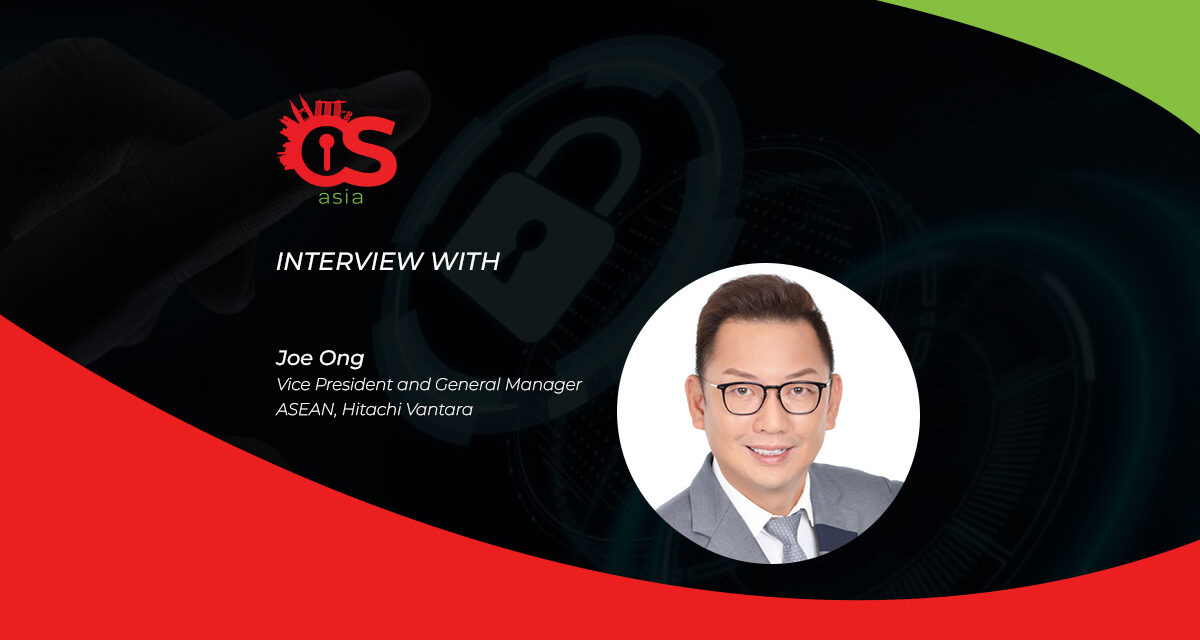With organizations in Asia overwhelmed by the increasing volume of data to be managed, security and resiliency are key considerations for a sustainable data infrastructure.
Hitachi Vantara recently published a global study which revealed that most organizations expect their data needs to nearly double in the next two years.
The report found that 60% of organizations in Asia are overwhelmed by the amount of data they manage, and a significant portion of them are concerned over the resilience, scalability, and security of their data infrastructure amid growing environmental sustainability challenges.
These concerns underline the urgent need for better data management now in an actionable and sustainable way, rather than having to deal with complicated efforts in the future to protect and manage the explosive growth of data.
For more insights into the study, and its relevance to the ASEAN and Asia regions, DigiconAsia posed some questions to Joe Ong, Vice President and General Manager, ASEAN, Hitachi Vantara.

What are the key concerns organizations in Asia face with regard to the security, sustainability, scalability and resilience of their data infrastructure?
The key concern voiced by six out of 10 organizations in Asia is that they won’t be able to cope with the amount of data that they manage, and that this would leave their data infrastructures vulnerable to security, sustainability, and scalability challenges.
These were among the key findings from our recent global Hitachi Vantara Modern Data Infrastructure Dynamics Report, which also revealed that 73% of those surveyed in Asia voiced concerned that their current data infrastructure would not be resilient enough to recover data from ransomware attacks. In fact, 70% of leaders said they may even not be able to detect a data breach in time to protect their data.
Additionally, 73% said they are worried about their ability to scale to meet upcoming demands, and although most IT leaders said they measure their data center’s energy consumption, almost one-third (32%) said their data infrastructure uses too much energy, and more than half (52%) admitted their sustainability policies do not address the impact of storing unused data.
And while the situation sounds dire now, what’s worrying is that the IT leaders expect their data needs to almost double in the next two years. Globally, organizations hoard an average of 35 petabytes (PBs) of data across their systems. Asian companies tend to store more data with an average of 42 PB, which means by 2025 leaders here will have to manage over 80 PB of data.
With the rise in ransomware attacks, what does the modern enterprise need to have and do to become resilient against cyber-attacks?
Ong: The key to building cyber resiliency is for businesses to modernize their data infrastructure and move away from legacy data protection. Legacy data protection is simply not flexible enough to scale to meet the performance and capacity demands of growing hybrid cloud environments and leaves workflows more vulnerable to attack.
To modernize their data infrastructure, organizations need to have data protection and cyber resiliency solutions in place to mitigate the growing sophistication of malware and ransomware attacks.
First, they need to safeguard their backups by implementing a more secure framework that limits access to backup data. Ideally, these solutions should enable strong combinations of data protection and object storage to deliver greater cyber resiliency. To strengthen defenses against any cyber-attacks, thin digital twin technology would enable organizations to simulate breaches and be more proactive in dealing with data compromises. It would also enable them to determine individual threat levels, estimate possible damages. Furthermore, it would help organizations gain visibility into technical vulnerabilities such as unpatched systems and software.
Second, they can use anomaly detection and prediction analytics to detect anomalies and ensure business continuity by allowing their organizations to recover more quickly when a data breach occurs.
Finally, they need to have a robust cyber resiliency and ransomware protection strategy in place. Leaders should think in terms of building intelligence and resilience across their entire ecosystem to prevent data loss now and in the future. Additionally, they must unify and automate data storage protection management to create a holistic view that simplifies operations and leaves no workflow behind. Having comprehensive data protection from a single console spanning the entire hybrid data storage ecosystem – both on-prem and cloud – paired with sophisticated intelligence would help ensure federated and more easily managed protection.
What do organization leaders need to know about growing multi-cloud complexities and the challenges that come with it?
Ong: Organizations in Asia are already overwhelmed by the amount of data they have to manage; multi-cloud complexities only further complicate the problem and make data infrastructure challenges a harder puzzle to solve.
The multi-cloud environment can create a lack of visibility and make it challenging to manage data and applications when numerous cloud providers are in play. This can result in blind spots that make it difficult to identify security concerns and take appropriate action.
Managing data across multiple clouds, while at the same time maintaining data integrity, consistency, and governance, can also be difficult. Organizations need to have a clear data strategy to avoid data silos and ensure proper data access controls.
On top of these challenges, 87% of decision-makers in Asia stress the importance of updating and modernizing their data infrastructure to facilitate their digital transformation efforts. While Asian leaders are expected to have to deal with more data, they are also most aware that they need to modernize their data infrastructure (92%).
Scalability, sustainability and security are the three imperatives of modern data infrastructure that organizations need to pursue in order to mitigate against growing multi-cloud challenges.
What are the strategies and actionable steps leaders can take to strategically manage data infrastructure-related challenges?
Ong: The results of our recent Hitachi Vantara study show that most organizations recognize the importance of working with third-party vendors for security, storage, and application services. Among leaders in Asia surveyed, 50% said they needed the most help improving cybersecurity, and 79% want to see data infrastructure solutions providers use their expertise to actively aid in the environment. The report emphasized the significance of implementing a deliberate strategy for becoming a data-driven company. To achieve this goal, business leaders can take the following measures:
- Modernization is essential to overcome the bottleneck of legacy systems that hinder digital transformation. By adopting modern data infrastructure, IT leaders can dynamically scale their systems, improve performance efficiency, and optimize costs by paying only for what is utilized.
- Empowering users is crucial for quick decision-making based on available data. To address this issue, businesses are encouraged to establish a comprehensive security and access framework while providing training to employees to ensure responsible data usage.
- Limiting waste is vital to maximizing the value of data. To combat data waste, bold leaders are advised to prioritize data cleanup initiatives and streamline operations and enhance overall efficiency.
By embracing these three steps, business leaders can propel their organizations towards becoming data-driven, thereby unlocking new opportunities for growth and success.

















